How to (Theoretically) Replace Your Judge with AI
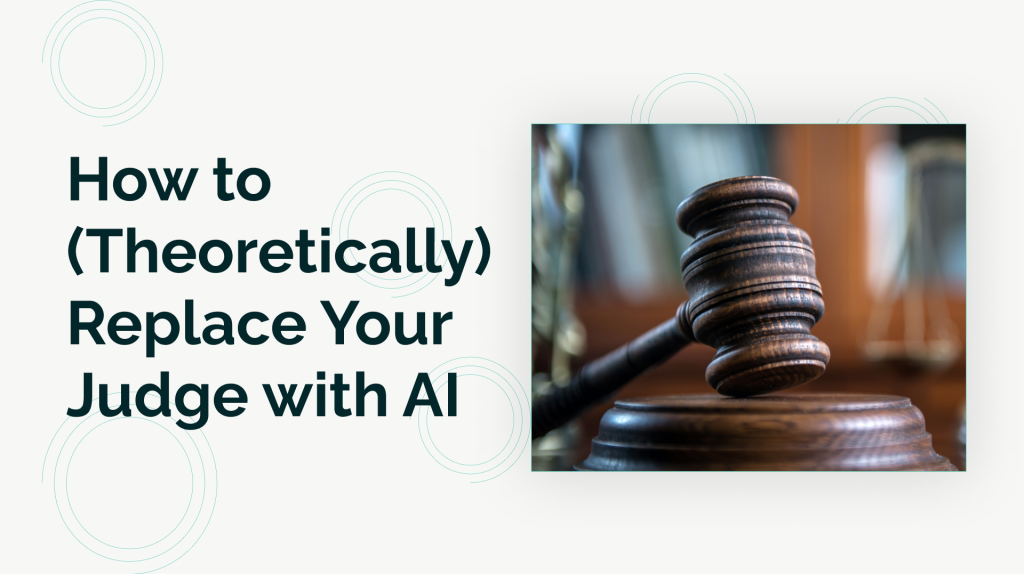
How to (Theoretically) Replace Your Judge with AI
With the onset of increasingly capable artificial intelligence (“AI”), so increases professions wherein humans see their jobs replaced by the more capable computers. A visit to “WillRobotsTakeMyJob.com” lends to some less-than-comforting predictions: accountants and auditors are listed as having a 94% chance of being replaced by AI, occupational therapists: 0%, and—as is the subject of this paper—the site indicates that judges have a 40% chance of being replaced by AI. This article will outline how to make an AI system suitable for judicial replacement and see what kind of threat our autonomous adjudicator actually poses to the job security of our current non-mechanical magistrates.
AI’s Algorithm:
Most modern AI uses “machine learning:” algorithms and statistical models that perform a specific task without using instructions, relying instead on patterns of collected data and inference. Such AI can collect astronomical amounts of data points and, from that data set, autonomously make determinations. This is not so unlike the judge, who looks at historical sets of data (precedent) to determine the appropriate action (a ruling) when faced with novel fact patterns (legal disputes). At first glance, AI appears to be well suited for a judicial positioning: all we would need to do is distill legal application into a formula that can be inputted into a computer and feed data from previous rulings into the computer’s machine learning process: we now have AI’s who can efficiently make determinations of law—more quickly and correctly than humans.
In order to even suggest that legal application can be reduced to a mathematical formula, it must first be appreciated that “the law” and the reasoning that is its predicate follow a certain pattern: a pattern from which we can discern models of expected outcomes. Once we have established what that model of law looks like, we can draw from comparable mathematical models to discern their similarities. If the comparable mathematical model is driven by a formula, and that formula can be inputted into computer systems such as to direct the system, then so too the legal model.
Legal Application’s Pattern:
Consider a law prohibiting driving or parking vehicles in a park. The law’s legal restriction could be memorialized and posted on a sign near the entrance to a park and plainly read “NO VEHICLES IN THE PARK” (the “No Vehicle Sign”). An AI judge could thus implement this law by the formula “if individual is in the park and driving a vehicle, then individual is guilty of violating the NO VEHICLES IN THE PARK rule.” And, since this is a simple law, this formula would correctly enforce the law in every situation, right?
Expanding our hypothetical further, assume a police officer is called to a park bearing the No Vehicle Sign pursuant to reports that someone is driving a vehicle in the park. The officer drives his squad car into the park and finds two other people with vehicles: First is Colton, who is tearing donuts through the park’s garden in a stolen BMW. Second is Bill, who is on his way to repair the park’s gardens in a landscaping truck. Which of these men are in violation of the park law that states, “NO VEHICLES IN THE PARK”?
It is almost certain that neither the landscaper-Bill nor the police officer will be found in violation of the park’s no-vehicle rule pursuant to a “presumed exception” to the law that permits landscaper trucks and emergency vehicles to enter the park without subjecting themselves to penalty for No Vehicle Sign violations. To understand the import of the presumed exception to the law for purposes of our model, an initial model of law could be constructed in diagrammatic form. In the model drawn below, behavior subject to penalty for violation of the No Vehicle Sign is represented by the black area. The white area outside the black box represents behaviors that are rightly not subject to penalty for violating the “no-vehicle” rule. This model contains every conceivable behavior; only the behavior subject to penalty for violating the No Vehicle Sign is colored:
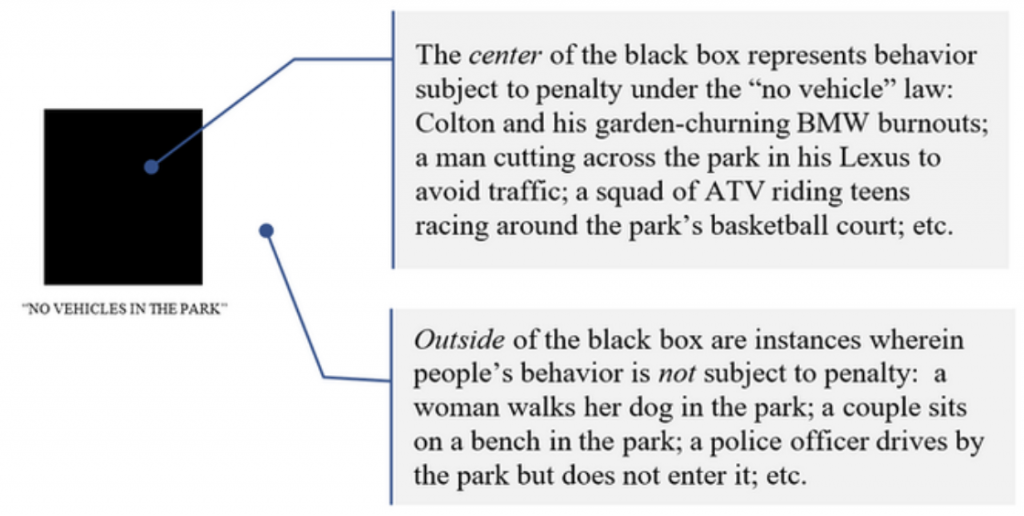
Figuratively speaking and assuming no other laws apply, within the border of the black box are instances only when an individual is (1) in the park and (2) using a vehicle. As shown by the previous example, however, there are times when someone is both (1) in the park and (2) using a vehicle yet still not reasonably considered violative of the “no vehicle” rule pursuant to our presumed exceptions. A presumed exception for landscaping vehicles, in our model, looks something like:

But what if [A] Bill sells his landscaping vehicle to a vagrant who then drives it onto the park? Or if [B] someone buys a landscaping vehicle from a dealer and drives it on the park to do donuts in the garden? Or if [C] Bill takes his landscaping vehicle and drives it around the park in the middle of the night to destroy the garden thereby providing himself with job security? These activities presumably would constitute behavior subjecting the culprit to penalty, and thus, despite falling into the “Landscaping Vehicle Exception,” a black area would nonetheless represent them. The Landscaping Vehicle Exception, then, has its own set of exceptions, which make for “carve-outs” of the “carve-out.”
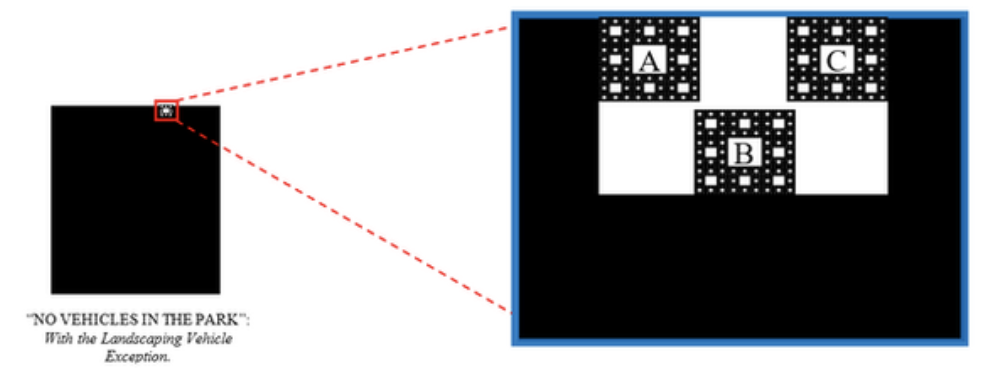
These exceptions and subsequent exceptions to them are without limit: change a single material fact of an exception and/or its exceptions, and there lies another exception, and so on, “with an infinite number of potentially necessary rule refinements and exceptions, ultimately resulting in an infinitely intricate border that separates the legal from the illegal.” Andrew Stumpff, The Law is a Fractal: The Attempt to Anticipate Everything.

Fractal’s Formula:
This recursive border complexity is captured by the mathematical construct, the “fractal.” A mathematical fractal is a shape with an infinitely complex border mapped via formula. The first fractal was discovered by Benoit Mandelbrot, who famously mapped the points of the iterative formula “Zn+1 = Zn2 + c.” Upon inputting this iterative formula into a graphing calculator, Dr. Mandelbrot’s computers discovered a shape with an infinitely complex border:

This is exactly the nature of the legal model’s shape: because human behavior is infinite, so is the complexity of the border between legal and illegal. Further, like a fractal, we can reliably determine (for the most part) what behavior is inside or outside of the model; the fringe cases give rise to infinite complexity. Because legal application involves synthesizing historical data so as to draw the line between legal and illegal, and that line is infinitely complex, the model of legal application can only be drawn by way of fractal. Thus, because the diagrammatic representation of a fractal is guided by a formula that can be inputted into a computer, then so too can legal application be captured by a formula similarly capable of being inputted into a computer.
The AI Judge:
It is entirely possible to have an AI-powered computer collect every factual scenario from every legal case to date, apply its machine-learned formula to novel cases, and make determinations in uniformity with its algorithm derived from the data set. In our case, the AI Judge would process thousands (if not millions) of instances wherein a landscaper had been found to have been violative of the “NO VEHICLES IN THE PARK” rule and apply it to Bill—ideally finding his situation sufficiently similar to previous instances wherein the landscaper was found not violating the rule and subsequently issuing an order freeing Bill of culpability. The more data points the AI Judge has (like what time Bill was at the park, what he was doing with the vehicle, etc.), the more accurate its adjudication. But what if there were no recorded cases wherein a landscaper had been charged with violating the No Vehicle Rule? Or the only recorded case involving a landscaper dealt with a landscaper who was, in that specific circumstances, rightly found guilty? In order to appropriately calculate these fringe cases and the presumed exceptions, the AI Judge must be guided by a formula similar to the formula/algorithm created by Dr. Mandelbrot: one that accounts for infinite complexities perforating the border separating legality and illegality—and able to operate without precise precedent.
The Legal Formula:
When faced with a lack of precedent, attorneys are expected to make arguments based on policy. In fact, even with applicable-but-damning precedent, an attorney can successfully overcome otherwise binding precedent pursuant policy considerations when adherence to the former would result in injustice. The law is, in effect, guided by policy: irrespective of precedent, policy can bend law towards justice and account for things like the presumed exceptions discussed above. In the case of the “NO VEHICLES IN THE PARK” rule, the underlying policy might be articulated as one aimed at furthering the patrons’ quiet enjoyment of the park while mitigating behavior that would disturb the park’s neighbors. Thus, if an AI can account for this whether the behavior at issue infringed on patrons’ quiet enjoyment of the park, or disturbed the park’s neighbors, the AI could determine that, irrespective of a lack of applicable historical data, Bill will nevertheless be found not to have violated the rule as his actions furthered the underlying policy. Our AI Judge’s formula is then, “in order to further patrons’ quiet enjoyment of the park and to not disturb the park’s neighbors: if an individual is in the park, and the individual is using a car, then that individual is violating No Vehicles in the Park Rule.” We could then feed the AI Judge every factual scenario involving individuals disturbing parks’ neighbors and/or preventing patrons from enjoying the park quietly, and, when presented with an individual using a car in the park, the AI Judge would cross-check the facts at bar with policy considerations. If it found that the individual’s use of the car in the park furthered the underlying policy, then, despite the individual using a vehicle in the park, the AI Judge would find the individual not violative of the rule.
The Human Intuition:
The problem with an AI judge is that, no matter how many factual scenarios you feed it, it may never be able to account for an unanticipated exception that would otherwise be captured by policy considerations. Since potential human behavior is infinite, a data collection of every human action ever taken is still mathematically closer to 0 data than the infinite amount of data needed to capture all potential human behavior. But how can humans apply policy to infinite situations? Our ability to apply policy is borne of a sort of “moral common sense;” something that, while often taken for granted by humans, can never be accounted for by pure sets of data. Since the AI’s algorithms and formulas are confined by data points, an AI will never break out of the boundaries of making decisions based strictly on “what has happened.” Thus, because the formula of legal application which accounts for the infinite complexities of human behavior is directed—at least in part—by policy, and policy is borne of common sense, an AI adjudicator will almost certainly need some level of human interaction.
AI, in Practice:
AI’s practical application was perhaps best summarized by Thomas Barnett of Paul Hastings at IG3 West 2019 when he stated “the question shouldn’t be how AI can replace the human intellect, but, rather, how can AI supplement human intellect.” Indeed, even the most robust AI systems still require some level of human direction (see, e.g., Google AI’s contract metadata extraction tool that requires that a human confirm the extracted data).
This understanding of AI is, for example, what drove the development of Briefpoint—an AI-backed litigation document generator. Instead of using AI to assume what a litigator will do, Briefpoint asks what the litigator would like to do first, then uses AI to amplify that decision. It will never draft facts in the light most favorable for an attorney’s client, nor come up with creative applications of the law to facts. Instead, it operates at the behest of the attorney to effect time savings via automation. Used in this—perhaps modest—manner, AI is made reliable and thereby suitable for the high threshold of the accuracy demanded by the practice of litigation.
When Machine Learning Takes the Stand
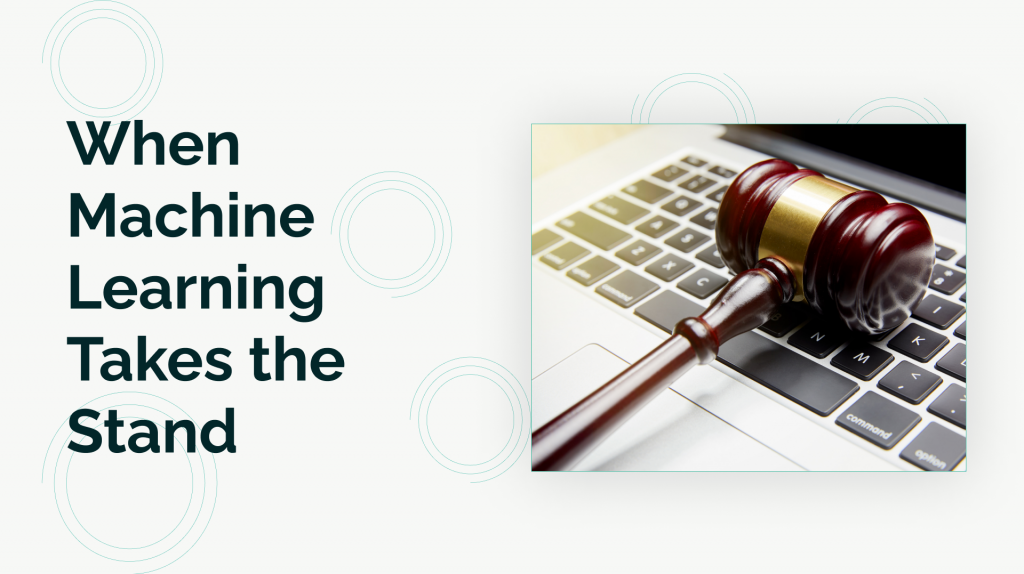
Section I: A Ground-Up Explanation of Simple Machine Learning
To understand machine learning, I find it helpful to first break the process down into its simplest components. In this pursuit, I wrote the following hypothetical which outlines the creation of a machine learning algorithm from the ground up:
In suing a corporation for violations of the Telecommunication Consumer Protection Act (“TCPA”), a class action plaintiff’s attorney subpoenas the defendant corporation’s call records. The defendant-corporation produces thirty-million unique call records, each identifying: (1) the date of the call, (2) the individual who received the call, (3) the transcript of the call, and (4) whether the receiver of the call consented to the corporation’s contact.
The plaintiff’s attorney would like to review these records in order to discover additional class members, but, even at a rate of 1-second-per-record, reviewing the thirty-million records by hand would take him 8,333.33 hours. Accordingly, the attorney creates a program to review the records under the following parameters:
1. If [date of the call] is after the [the TCPA’s effective date], and
a. If the individual who received the call did not consent to the call, or
2. If the individual who received the call consented to the call—but thereafter reneged consent,
3. Then, the individual who received the call is a member of the injured class.
The program runs each record through these parameters and separates each into two groups: records of phone calls made in violation of the TCPA (thus containing class members) and records of non-violative phone calls. Using a standard computer, the attorney’s algorithm could process all thirty-million records in about 1/16th of a second. For purposes of this hypothetical, let’s say the resultant data initially tallies only 10,000 class-members to 29,990,000 non-class members. The attorney knows 10,000 is too low a number to be accurate, so he adds another condition to the algorithm:
1. If [date of the call] is after the [the TCPA’s effective date], and
a. If individual who received the call did not consent to the call, or
b. If individual who received the call consented to the call but thereafter reneged consent, or
c. If the transcript reveals the defendant’s employee violated the TCPA,
2. Then, the call violated the TCPA and the individual who received the call is a class member.
Now, in order for the algorithm to function, it needs some method of determining what about the contents of a transcript constitutes a TCPA violation. Appreciating the complexity of what constitutes a TCPA violation, the attorney likely cannot effectively list out each deciding datum. Instead, the attorney can imbue its algorithm with machine learning by coaching it to make these determinations on its own using the following method:
First, the attorney takes a randomly-selected sample of 10 call records from the 29,990,000 (“Record Set One”). He reviews one of those records and finds that the transcript of the call shows that the defendant’s employee failed to disclose that she was making a sales call, thereby violating the TCPA’s disclosure requirement. Accordingly, the attorney marks that as a “class member” record and moves onto the next randomly selected record in Record Set One. Once he’s reviewed each record in Record Set One, the algorithm compares those to the remaining 29,989,990 and reorders them according to each record’s degree of similarity to the records marked as “class member records” in Record Set One. Because the algorithm is basing this reorganization on only 10 categorized emails, the reorganized list is likely still highly randomized. For example, if each of the records the attorney marked as a “class member record” just happened to have the word “shit” in it, the algorithm would unwittingly rank records containing the same higher than other records solely because the former contained “shit” when the latter did not.
But, irrespective of the algorithm’s early missteps, the reorganized dataset nevertheless has been organized. And, even at this premature stage, given the reordered list spans from “most similar” to “least similar” to those marked by the attorney as “class members,” the records falling in between the “most” and “least” are close calls”—i.e., the records that the algorithm has the most difficulty categorizing.
Continuing on, from the reordered list, the algorithm selects another random 10 records from the middle “close call” area of the reorganized list (“Record Set Two”). The attorney reviews these records in the same fashion as he did with Record Set One. In Record Set Two, however, he determines that none reflect a TCPA violation and thus marks all the records as “non-class member” records. The algorithm takes this input and then ranks the remaining 29,989,980 in order of similarity to the “class member” records in Record Set One and dissimilarity to the 10 records in Record Set Two. Once reorganized, the algorithm again picks 10 records from those “close call” records around the middle of the new list (“Record Set Three”) and the attorney reviews those anew. This process repeats until the attorney reviews 100 records. Graphically, this process might look something like this:
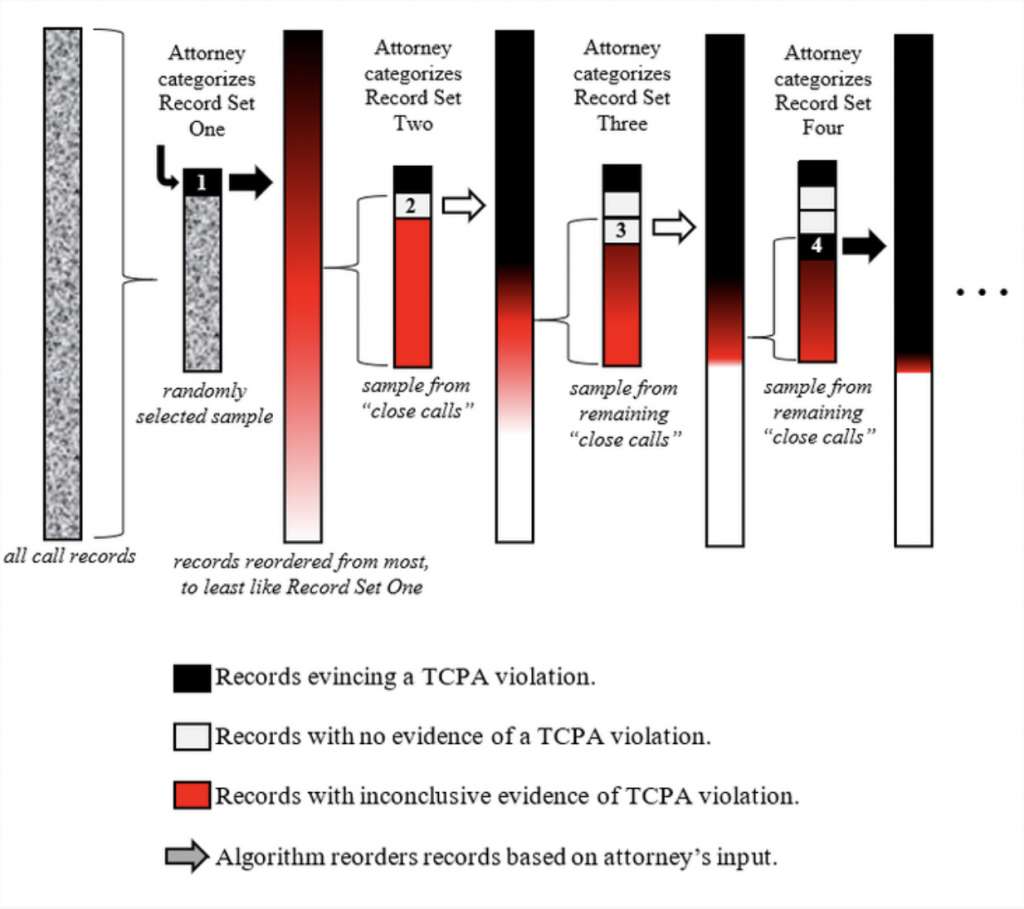
The algorithm’s process of extrapolating from the attorney’s input in autonomously reordering and categorizing the call records is the “machine learning” process. In particular, this simple machine learning algorithm is known as a Technology Assisted Review program, or “TAR,” also referred to as “predictive coding” (when applied to larger data sets). The more data this algorithm ingests (learns), the more accurately it determines whether a call record contains a TCPA violation. And, as has been concluded in almost every study on the subject to date, it does so faster and more accurately than a human.
Section II: Daubert
“Expert testimony” is implicative of “objective testimony.” But, as is the case in 92% of federal civil trials, when two experts testify in contravention of one another, both cannot be right. Accordingly, judges, who are—for all intents and purposes—not experts, act as gatekeepers tasked with vetting an expert’s testimonial reliability using the tools of evidence/admissibility.
To assist these judges, the Supreme Court in Daubert v. Merrell Dow Pharmaceuticals, Inc. (“Daubert”) effectively established “reliability” as the touchstone of an expert’s testimonial admissibility. In 2011, Daubert and the series of subsequent cases were codified in Federal Rule of Evidence 702 (“FRE 702”). Under Daubert, a judge considers the following factors when determining the reliability of expert testimony:
a. whether the theory or technique in question can be (and has been) tested;
b. whether it has been subjected to peer review and publication;
c. its known or potential error rate;
d. the existence and maintenance of standards controlling its operation; and
e. whether it has attracted widespread acceptance within a relevant scientific community.
Daubert v. Merrel Dow Pharm., Inc. (1993) 509 U.S. 579
And, as is clear from the list of federal cases following Daubert, judges may also look to other factors to determine reliability, including whether: (1) the expert developed their opinions for purposes of testifying; (2) there is a justifiable connection between the data and the expert’s opinion; and (3) the expert acknowledged and considered alternative explanations for the same proposition.
But how can a non-expert judge determine the reliability of an expert’s “principles and methods” when such evaluation itself requires specialized knowledge of the field? Are we not then imposing a duty on a judge to research an expert’s field in order to determine if the expert’s methodology aligns with those relied upon in the expert’s field at large? As feared by Chief Justice Rehnquist in his Daubert dissent, Daubert might require judges to “become amateur scientists in order to perform [the reliability screening] role.”
Further, if a judge accurately concludes that an expert’s principles and methods are reliable in the context of that expert’s field, the judge assumes that the expert’s field, itself, practices reliable methodologies. This assumptive gap provides for the deepest pitfall when an expert speaks on behalf of a controversial field akin to a pseudo-science. One such field, environmental psychology, purports to study how an individual’s surroundings influence mood and decision making. Environmental psychology’s methodology can be boiled down into putting someone in a room and giving them a questionnaire about how they feel. This methodology assumes that the individual’s feeling is controlled by the room yet draws no connection between the two. Accordingly, the scientific community has deemed the methodologies of environmental psychology unreliable. (See, e.g., Methodology in Environmental Psychology: Problems and Issues, Harold M. Proshansky, 1972.) Without enlisting the testimony from scientists from every—presumptively—reliable field, how is a judge to consistently determine that a field such as environmental psychology cannot provide a reliable basis for expert testimony?
As alluded to, one solution might be to enlist court-appointed experts to testify regarding the reliability of the underlying field’s methodology. (See, e.g., Court Appointed Scientific Experts (CASE), AM. ASS’N FOR THE ADVANCEMENT OF SCI.) But, taken to its next logical step, we would need further experts to testify as to those experts’ methodology for testing the field’s methodology, and so on and so forth, ad infinitum.
Alternatively, some courts—like those in California—apply the “Kelly-Frye test” requiring “general acceptance” in the relevant scientific community. In applying this test, a trial judge’s role is to flatly count the number of members of the relevant scientific community who accept the validity of the technique and weigh it against the number of those who reject it. However, there is no bright-line rule on what constitutes a “relevant” scientific community. When, as with environmental psychology, the underlying field is a multidisciplinary one, a judge must discretionarily choose which field to tally approval/disapproval from, if not both. Hence we are back where we started: a purported resolution to Daubert’s deficiencies that calls for additional expert input that would—again—warrant expert analysis, and so on and so forth, ad infinitum.
Appreciating these deficiencies, and as concluded by Professor Pamela S. Katz of Russell Sage College, “all evidence points to the fact that Daubert is simply not working as the optimistic majority intended it to.”
Section III: Daubert and Machine Learning
The process of extracting evidence through the use of machine learning is, for all intents and purposes, sufficiently specialized to warrant their consideration in Daubert motions in limine. In that regard, machine learning easily satisfies three of the four Daubert factors without extensive discussion: Machine learning evidence would certainly meet the testability consideration since these processes produce results that can be—and often are—shown to be false. Machine learning also satisfies Daubert’s peer review consideration, given the peer-reviewed literature on it has proliferated in recent years, with some of its scientific principles dating back to 1956. And, machine learning benefits from general acceptance in the field or scientific community, wherein practitioners apply the technology to a myriad of disciplines.
III.A | FRE 702(d) v. Error Rates
III.A.i | Machine Learning’s Error Rates Are Problematic Under Daubert Because They Are Created by the Coder and Are Restricted to the Underlying Data
Daubert’s requirement that the science have either known or potential error rates, however, presents a more complicated analysis. The problem lies in the definition of an error rate within the context of the machine learning program. Machine learning algorithms usually have two important error rates: one rate of output error in the context of the training data, and one rate of output error when applied to real world data. In our example above, the latter error rate would apply when the attorney took his already-trained algorithm and applied it to a new set of records. The latter error rates are problematic because of the breadth of errors potentially captured and concealed thereunder. For example, with purely binary outcomes like in our example, an error rate might capture a call record whose transcript is 50% alike a TCPA violation record and 50% alike a non-TCPA violation record in the same way it captures call records that are 0% alike a TCPA violation and 0% alike a non-TCPA violation. Yet, when presented, the error rate might make no differentiation between the two. Without further investigation, then, a binary error rate would appear to quantify the reliability of the machine learning output while improperly equating “close-call” call transcripts to unintelligible ones.
III.A.ii | Machine Learning’s Error Rates Are Problematic Because They May Not Capture Exceptions to the Historical Data Trend
Another problem with machine learning error rates arises from the simple fact that the algorithms consider potentially-infinite novel data only in light of mathematically-limited sets of historical data. Simply put, any machine learning algorithm is “only as smart as the data used to train it.”
For example, this was the case for a widely used facial-recognition software, whose training data set was estimated to contain more than 75 percent male and more than 80 percent white faces. Pursuant to this data, the software was “right 99 percent of the time” but only when “the person in the photo is a white man.” When examining a darker-skinned woman, however, its accuracy fell to as low as 64%—a 35% error-rate delta. Ultimately, then, the error rates’ reliability was not just correlated, but anchored to the similarity between the novel data and the training data.
III.A.iii | Intermediary Conclusion
Because machine learning error rates lack the same cornerstones of reliability as those found in the broader scientific community, machine learning evidence is susceptible to violating FRE 702(d)’s requirement that the evidence by “reliably applied to the principles and methods to the facts of the case.” That being said, testing machine learning error rates’ reliability is entirely possible. As with the aforementioned example, error rates’ reliability can be measured by comparing the novel data with the training data: the less-like the novel data is to the training data, the larger the analytical gap between the data and the determination. And machine learning’s “analytical gap” is then no different than those analytical gaps Daubert hearings have grappled with for ages. (See, e.g., Gen. Elec. Co. v. Joiner (1997) 522 U.S. 136, 146 [“A court may conclude that there is simply too great an analytical gap between the data and the [expert] opinion preferred”].)
III.B | FRE 702(b) and 702(c) v. Data Sets
Reliability and sample sizes have gone hand-in-hand since the dawn of expert testimony. The issues therein apply equally to machine learning training data sets. The larger the training data set, the more reliable the results. But what is a sufficient sample size for one use may be woefully inadequate for another. For example, text recognition may require only a few thousand examples to operate whereas language translation requires tens of millions of examples.
Machine learning’s sample size issue, like any sample size issue, is context-dependent and almost impossible to capture via the bright-line rule. As noted, however, this issue is not unique to machine learning and thus neither weighs for or against its admissibility under Daubert.
What is unique to machine learning, however, is the question of how large a sample size of data should be in the training data sample. In our TCPA-phone-record example, the attorney used 100 phone records to determine if the remaining 29,999,900 records reflected TCPA violations. While a court might find 10 training iterations too few, it would be difficult to articulate exactly how many training iterations would suffice. If 100 is too few, is 1,000 enough? 2,000? 20,000? Like the problem with study sample sizes, the sufficiency of the training dataset is too contextualized to be effectively captured by a bright-line rule.
But, unlike the problem with sample sizes in general, however, each training data review iteration impacts the underlying dataset less than the iteration before. The training data review iterations thus have diminishing returns that would, at some point, plateau. Depending on the context, a proponent of machine learning evidence could point to the plateau in the return-on-input as a reasonable stopping point. This is conceptually similar to those discussions relating to marginal returns and virtually identical to those comprising the basis for the Learning Curve Theory, graphed as follows:
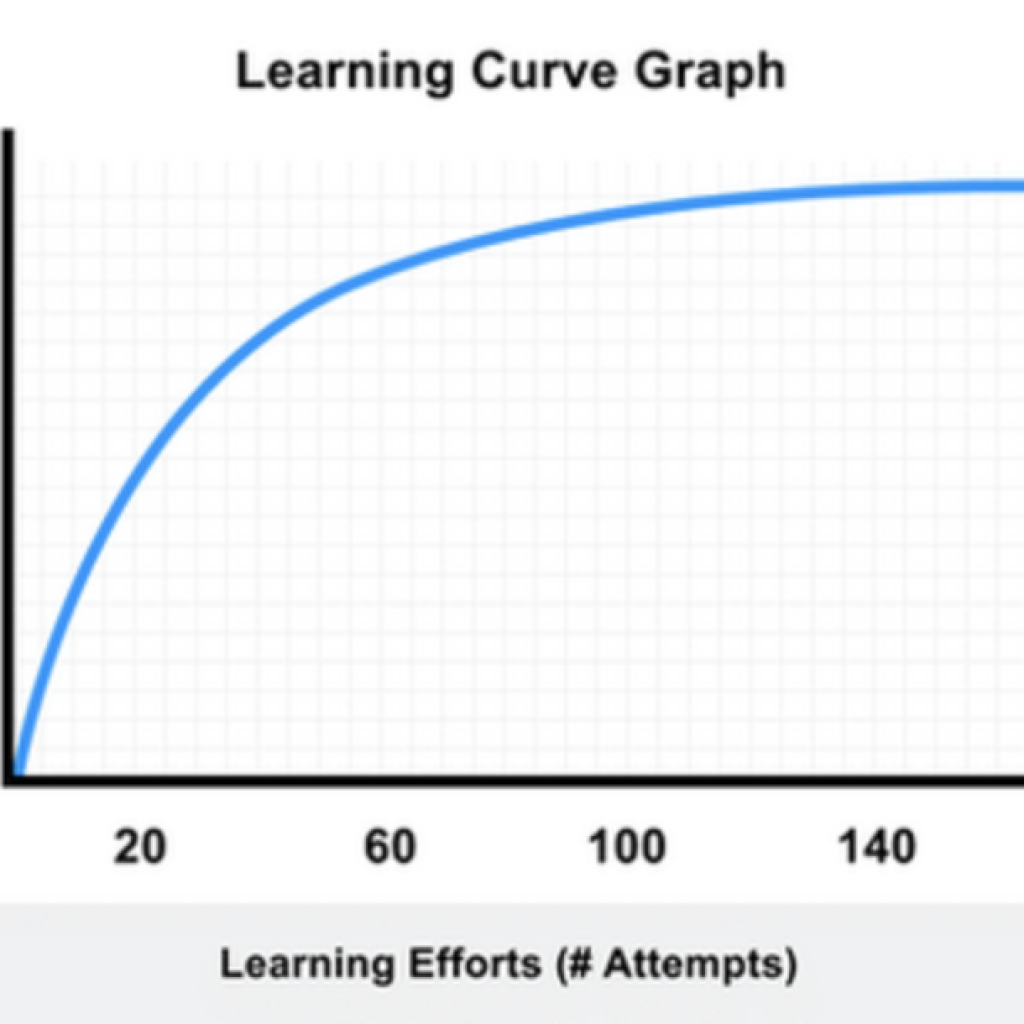
This concept is not unfamiliar to machine learning algorithms—to the contrary, most machine learning algorithms expressly dictate the number of data points sufficient to reach the plateau of the above learning curve. Accordingly, the threshold question that any judge should consider when evaluating the admissibility of machine-learning garnered evidence is whether the dataset met that optimal point.
Will that optimal dataset number always be accurate?
No.
Will the machine learning algorithm be immune from error once it reaches that point?
No.
Is it perfect?
No, but it does provide us with a minimum viable metric that courts can use to test the sufficiency of machine learning-based evidence, and that’s a good start.
5 Legal Tech Solutions That You Can Actually Use
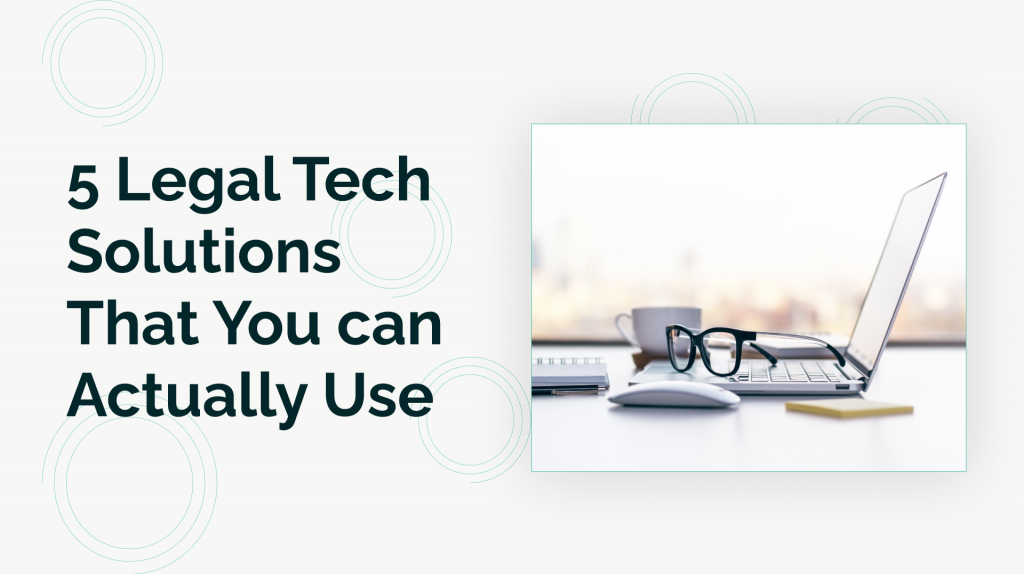
5 Legal Tech Solutions That You Can Actually Use
The push to remote work brought with it a golden age of legal tech investments aimed at finally dragging the practice of law into modernity. 2021 alone brought about a historic $1B in funding for legal tech companies (via Crunchbase). But, as has always been the case with legal tech, the main impediment to widespread adoption is attorneys’ hesitancy to try new tech. To be certain, their hesitancy is not necessarily misplaced. Unlike its silicon valley peers, legal tech has not, historically, focused on user experience. Many solutions that purport to offer massive time saves remain ultimately unused by practicing attorneys on account of prohibitively steep learning curves. Simply put, lawyers avoid tech that makes them feel incompetent — and who could blame them?
Accordingly, this article will highlight some of the leaders in the legal tech space that provide powerful solutions that are usable without the need for a degree in computer science (or any training, for that matter). These solutions were picked because of their laser focus on the lawyer’s experience and “walk-up usability.” This list is by no means exhaustive — but, rather, intended to provide attorneys of all technical ability the opportunity to try a couple of new solutions right out of the box.
1. Ironclad—Contract Lifecycle Management
Ironclad has fast become one of the brightest unicorns in the legal tech world. Its accelerated adoption rates across in-house counsel teams and business units alike can be explained by its powerfully intuitive platform. Draft contracts, track renewals, automate negotiation processes, tag contracts with Google AI, manage terms of use, and more — all in one place. Like Google, Ironclad provides its users with some of the industry’s most powerful tech in a manner that requires no explanation. Just poking around the platform you could gain a working understanding of its features in minutes. Unlike some of its peers, Ironclad gives you the ability to try out the platform before purchase, which can be set up by requesting a demo at this link.
2. Briefpoint—AI-Backed Litigation Document Drafting
Briefpoint is perhaps the simplest solution on the market — it reduces the amount of time you need to spend responding to discovery into a matter of minutes (instead of hours). To use it, all you need to do is upload a discovery request, choose how you’d like to object to each request, respond if necessary, and download the Word document. Just like that, all that’s left for you to do is sign and serve. While currently only offering its solution for California discovery requests, Briefpoint is rapidly expanding into other jurisdictions and document types, with the ambitious goal of “allowing any litigator, in any jurisdiction, to automate the meat and potatoes of every litigation document with a simple drag-and-drop.” You can try Briefpoint for free on their website, linked here.
3. Logikcull—eDiscovery
Logikcull is a platform that brings a great user experience to an otherwise terrible one — document review. Unlike some of the it’s legacy peers, Logikcull brings a fresh, modern approach to document review, driven by simplicity. Like Briefpoint, all it takes to start using Logikcull’s platform is a simple drag and drop of your files onto its platform. Once processed, Logikcull’s automated, end-to-end document review starts and you can be on your merry way, reviewing documents with the power of 10 associates locked in a dark room over the weekend. You can try Logikcull for free on their website, linked here.
4. Motionize—AI-Powered Spellcheck for Contracts
Motionize is a document drafting aid and knowledge management tool integrated with your document management system that allows users to access precedent clauses all while staying in Microsoft Word. In addition, their tagging feature automatically improves enterprise search as attorneys work, giving you greater insight into your team’s productivity. You can see Motionize in action at this link.
5. MyCase—Firm Management
MyCase is a great option for firms looking for a practice management solution that is robust but not complex. The project management features are straightforward, accounting reports are intuitive, and the communication modules are simple. By centralizing the majority of your law office work onto one platform, MyCase makes things simple by alleviating the need for a patchwork of other solutions. You can start a free trial of MyCase at their website, linked here.
